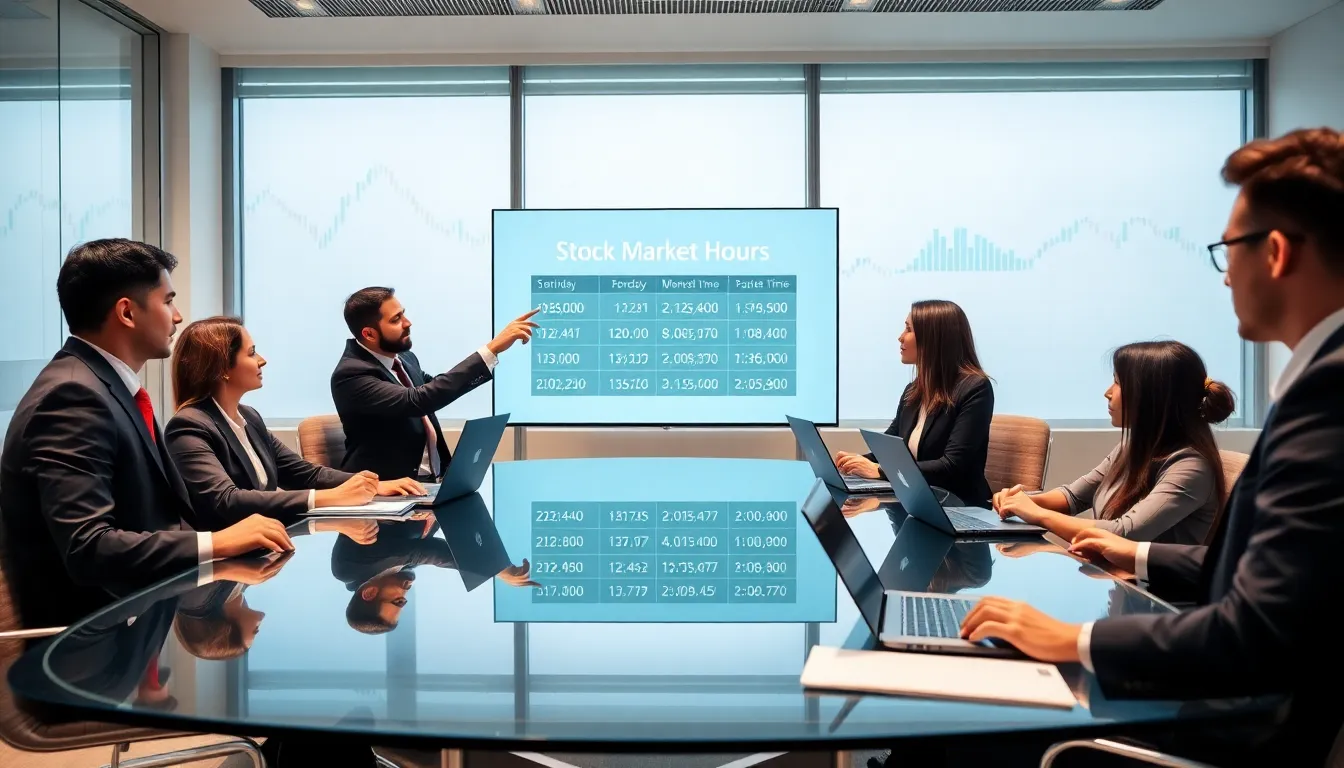Wondering what time the stock market closes in Pacific Time? Don’t worry: you’re not alone. Every trader has had their fair share of head-scratching moments when trying to navigate the world of stock trading hours. It’s not just about the stocks but also about knowing when to grab your favorite snack or hit the couch after a long day. Want to make sense of it all? Let’s jump into the ins and outs of market hours like a seasoned trader, all while keeping it fun.
Table of Contents
ToggleOverview Of Stock Market Hours

Understanding stock market hours is crucial, especially for those keen on making the best trades. The stock market operates in defined time slots, and knowing these can significantly impact your trading strategy. In the U.S., major exchanges like the New York Stock Exchange (NYSE) and the NASDAQ stick to a schedule that many investors rely on. For the purpose of this discussion, we’ll focus on Pacific Time, or PT, as it can vary significantly from Eastern Time, where most market activity is generally reported.
So, what are these hours, you ask? Regular trading sessions typically align with business hours, utilizing a standardized approach across the board. This is helpful: but, things can get complicated during special circumstances, which we’ll investigate into a bit later.
Regular Trading Hours
The regular trading hours for major U.S. stock markets run from 9:30 AM to 4 PM Eastern Time, which translates to 6:30 AM to 1 PM Pacific Time. It’s important to remember that all trades made during this time are considered part of the standard trading session. The opening bell rings at 9:30 AM ET, sending traders into a frenzy, and the closing bell at 4 PM ET signals the end of the day.
Whether you’re day trading, swing trading, or simply keeping an eye on your portfolio, being aware of these hours can greatly enhance your overall trading experience. It’s like getting the biggest popcorn you can find before the movie starts, you don’t want to miss the action.
Stock Market Closing Times By Exchange
Different stock exchanges have their own schedules that you should keep in mind. Here’s a quick rundown:
- New York Stock Exchange (NYSE): Closes at 4 PM ET (1 PM PT)
- NASDAQ: Closes at 4 PM ET (1 PM PT)
- Chicago Stock Exchange (CHX): Also closes at 4 PM ET (1 PM PT)
Plus, various international markets may have different closing times, so it’s wise to check those schedules if you’re trading anything other than U.S. stocks. Think of it as a global puzzle: every piece matters, and knowing where they fit helps clear the picture.
Impact Of Daylight Saving Time
One thing that can throw off even the most seasoned trader is Daylight Saving Time (DST). When we spring forward in March and fall back in November, the time difference between Eastern and Pacific times changes. This means that during DST, the regular trading hours shift:
- March to November: 6:30 AM to 1 PM PT (standard trading hours)
- November to March: 7:30 AM to 2 PM PT (after the shift back)
It’s essential to be mindful of these changes, particularly if you like to trade on the day of the hour change. It’s like forgetting to set your clock back on New Year’s Day but at least without the hangover.
After-Hours And Pre-Market Trading
For those eager to catch that extra wave of trading, after-hours and pre-market sessions can be a game changer.
- Pre-Market Trading: Generally occurs from 4 AM to 9:30 AM ET (1 AM to 6:30 AM PT)
- After-Hours Trading: Runs from 4 PM to 8 PM ET (1 PM to 5 PM PT)
These sessions allow traders to react to news that comes out while the market is closed, enabling opportunities but also risks. Think of it as a late-night snack for the hungry trader, sometimes it’s great, but sometimes it’s a big regret when trying to sleep.
How To Stay Informed About Market Hours
Staying informed about stock market hours is not difficult, but it does require a bit of diligence. There are numerous resources available:
- Official Exchange Websites: Places like the NYSE and NASDAQ offer up-to-date information.
- Finance News Outlets: Websites such as Bloomberg and CNBC keep you in the loop with all the latest.
- Trading Platforms: Most platforms provide real-time data and alerts about trading hours.
Signing up for notifications or setting alerts on your trading app can also ensure you never miss a beat. It’s like setting a calendar reminder for an exciting event, nothing worse than showing up fashionably late.




